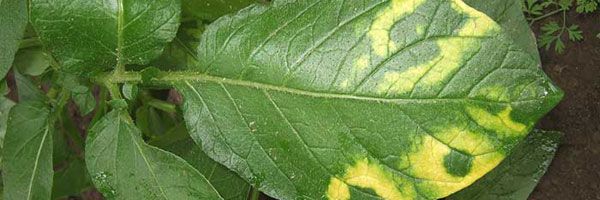
Potato Mop Top Virus
(PMTV)
- Causal agent and transmission
The only known vector of Potato mop-top virus is a fungus of the Plasmodiophoridae family (recently reclassified in the Protozoa kingdom), Spongospora subterranea f.sp. subterranea, the causal agent of powdery scab on potato tubers and roots.
The virus is carried in the resting spores (cystosori) in which it persists for at least two years.
Transmission to potato roots is made by motile zoospores released in humid conditions by virus-carrying cystosori which directly infest roots or tubers.
As a consequence, the disease is frequent in cold and humid climates, e.g. Northern Europe, and in damp, heavy or peaty soils.
Transmission of the virus from the seed to the daughter tubers is limited as affected tubers only transmit the viral disease to less than 20% to 50% of their progenies; however seed tubers can serve as a carrier to transfer the fungal disease from one field to another.
Dissemination of PMTV is through powdery scab-infested seeds but also through all activities resulting in the movement of infected soil (machinery, seed tubers, dust storms, manure or organic waste). Tubers may also become contaminated during storage and grading through dust originating from a contaminated seed lot.
Host-plants of PMTV include Solanaceae, e.g. potato, tomato, petunia, and Chenopodiaceae (beet) as well as some common weeds such as Solanum nigrum and Datura stramonium. Some potato cultivars may be hosts but symptomless.
- Significance
The economic importance of PMTV is mainly related to the presence of necrotic symptoms in tubers which may reduce the value or even lead to the downgrading or rejection of the affected potato lots. The virus and its vector are found in cool and humid climates.





